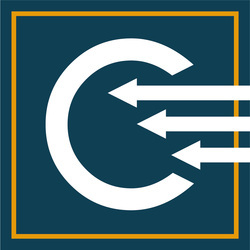- 888-624-3390
- Contact Us
- Member Login
- Get Listed Today

One crippling effect of back injuries can be muscle atrophy, or the loss of muscle mass and strength. Muscle atrophy may be brought on by trauma, immobilization, or underlying medical conditions, and it can seriously reduce mobility and quality of life. Chiropractors are important players in the quest to regain strength and function. For those suffering from muscle atrophy, chiropractors provide efficient treatment options because of their training in spinal manipulation, rehabilitation exercises, and a holistic approach to healing. Let us examine how patients can regain their strength and resilience by learning how chiropractors manage this condition.
Understanding Muscle Atrophy: It is important to comprehend the mechanisms underlying muscle atrophy before learning more about chiropractic care. When muscles are inactive or immobilized, atrophy takes place, resulting in a loss of mass and power. This may happen as a result of a disease, an accident, extended bed rest, or ailments like spinal cord injury or nerve damage. Back pain, weakness, and restricted movement can be caused by muscle atrophy, which aggravates pre-existing back injuries and delays healing.
A Chiropractic Perspective on Muscle Atrophy: In order to treat muscular atrophy, chiropractors employ a variety of techniques, including realignment correction, strengthening and stretching of the muscles, and treatment of underlying causes. The following are some of the of the essential elements of a chiropractic atrophy treatment plan:
Spinal adjustment: A key component of chiropractic care is this gentle manipulation of the spine to realign vertebrae and enhance nerve function. Chiropractors employ particular techniques to realign the spine, relieve nerve pressure, and improve communication between the brain and muscles in patients suffering from muscle atrophy. Chiropractic adjustments have the potential to enhance muscle function and mobility by reestablishing optimal spinal alignment.
Exercises for Rehabilitation: To strengthen weak muscles, increase flexibility, and improve general function, chiropractors recommend specific exercises for rehabilitation. Depending on the needs and abilities of the person, these exercises may include stabilization, resistance training, and stretching. Chiropractors assist patients in regaining strength and mobility through the integration of rehabilitation exercises into a comprehensive treatment plan. This minimizes the likelihood of additional muscle atrophy and promotes long-term recovery.
Manual Therapy: Chiropractors can use manual therapy techniques to address muscle imbalances, release tension, and promote healing, in addition to spinal adjustments and rehabilitation exercises. Massage, trigger points, and myofascial release are a few of the techniques that can help increase blood flow, lessen inflammation, and ease the pain that comes with shrinking muscles. Chiropractors help muscles function optimally and aid in recovery by focusing on tight or dysfunctional muscles.
Nutritional Support: As a means of promoting muscle health and healing, chiropractors understand the significance of nutrition. They might offer advice on dietary tactics to encourage the growth of muscles and stop additional muscle atrophy. This could involve suggestions for foods high in protein, vitamins, and supplements to aid in the regeneration and repair of muscles. Chiropractors assist in maximizing the body's capacity to repair and regenerate muscle tissue by addressing nutritional deficiencies and encouraging a balanced diet.
Lifestyle Adjustments: In order to manage muscle atrophy and promote general health and well-being, chiropractors stress the significance of making lifestyle adjustments. This could involve suggestions for leading an active lifestyle, steering clear of extended periods of inactivity, and using the right body mechanics and ergonomics to prevent further injuries. People can enhance their ability to repair muscles and reduce their chance of re-injury by embracing a healthy lifestyle that includes movement.
Benefits of Chiropractic Care for Muscle Atrophy: Selecting chiropractic treatment for atrophy of the muscles has several advantages:
Non-invasive: Unlike surgery or medication, chiropractic treatments are non-invasive and offer a gentle and safe substitute.
A personalized approach: chiropractors create treatment programs based on the particular requirements of each patient, guaranteeing specialized care and the best outcomes.
Pain relief: Manual therapy methods and chiropractic adjustments can help people with muscle atrophy feel better by reducing pain and discomfort.
Improved mobility: Patients can participate in everyday activities more comfortably thanks to chiropractic care's ability to improve flexibility and mobility by reestablishing optimal muscle function and spinal alignment.
Preventive care: Frequent trips to the chiropractor can help reduce the likelihood of complications from the condition and stop additional muscle atrophy.
Despite the difficulties that muscle atrophy may cause, people can recover their strength, mobility, and independence with the appropriate care. A comprehensive approach to treating spinal misalignments, preventing muscle atrophy, increasing muscle strength and flexibility, and enhancing general wellbeing is provided by chiropractors. People who have experienced muscle atrophy can regain their health and lead more active and satisfying lives by embracing chiropractic care. They can also rebuild their strength, resilience, and confidence.
